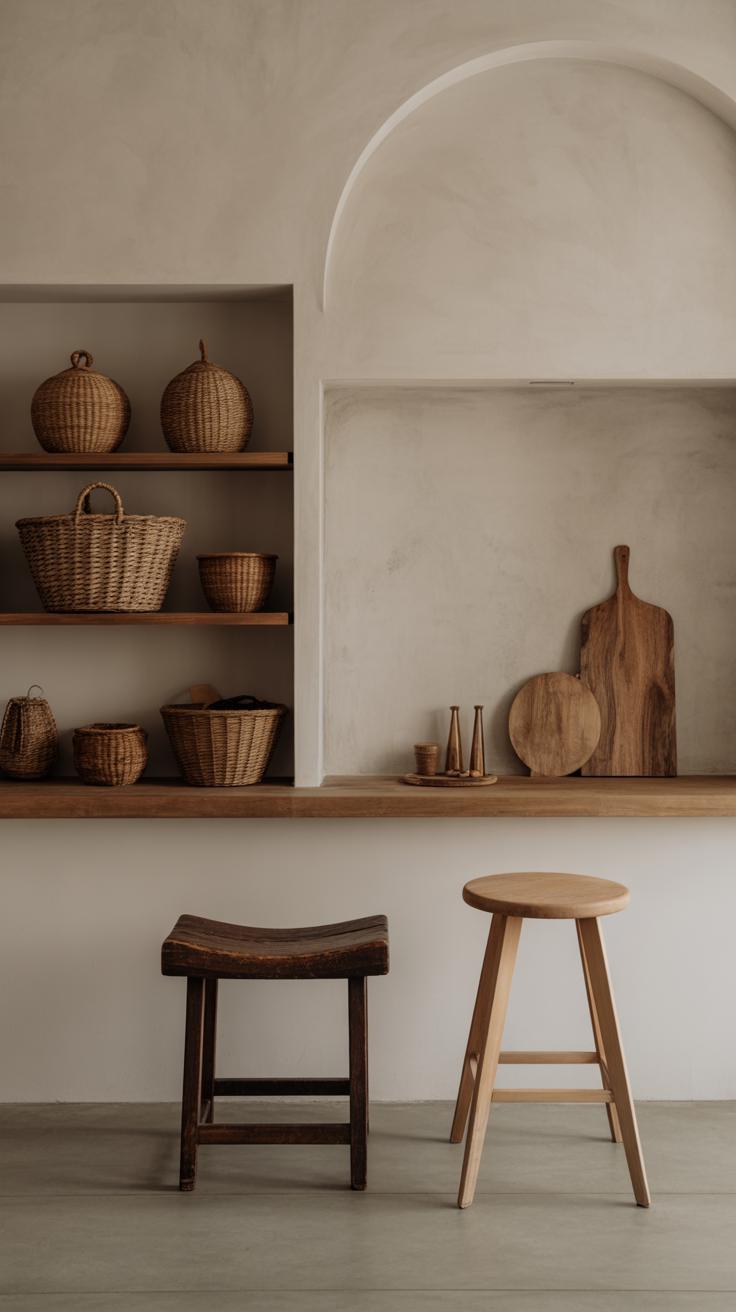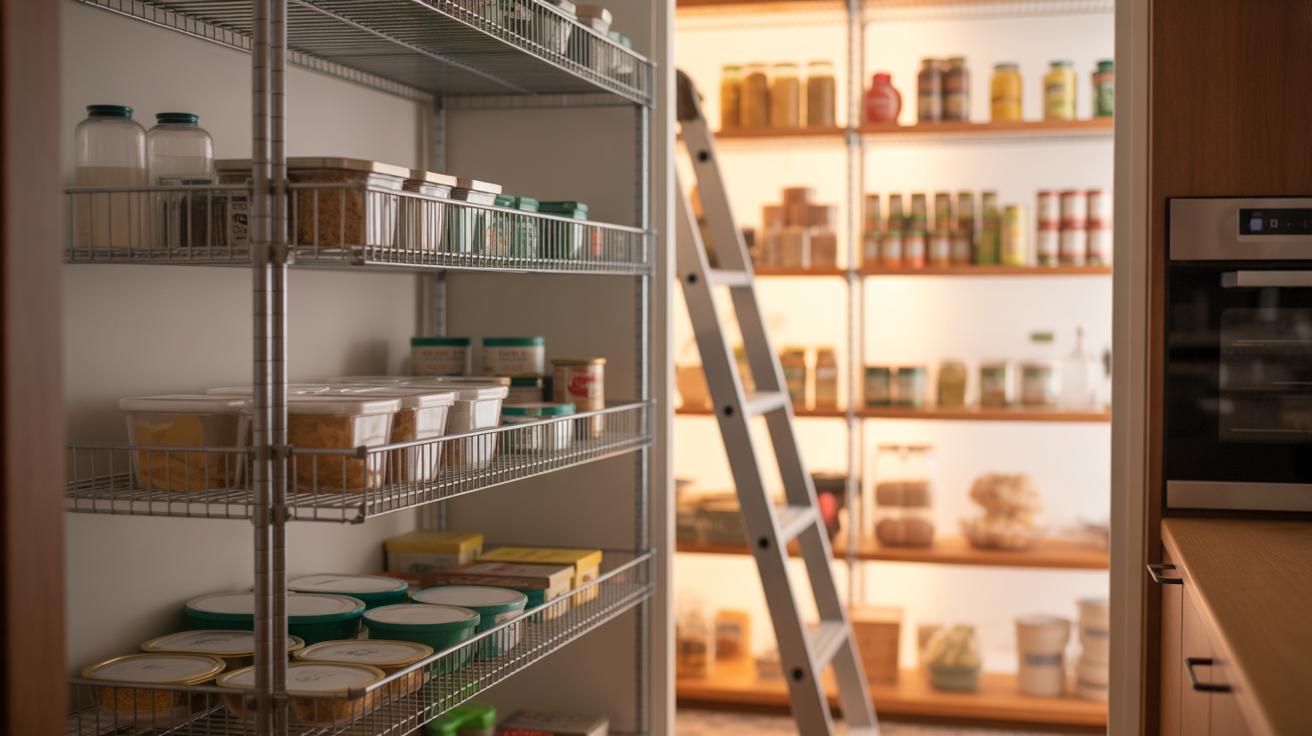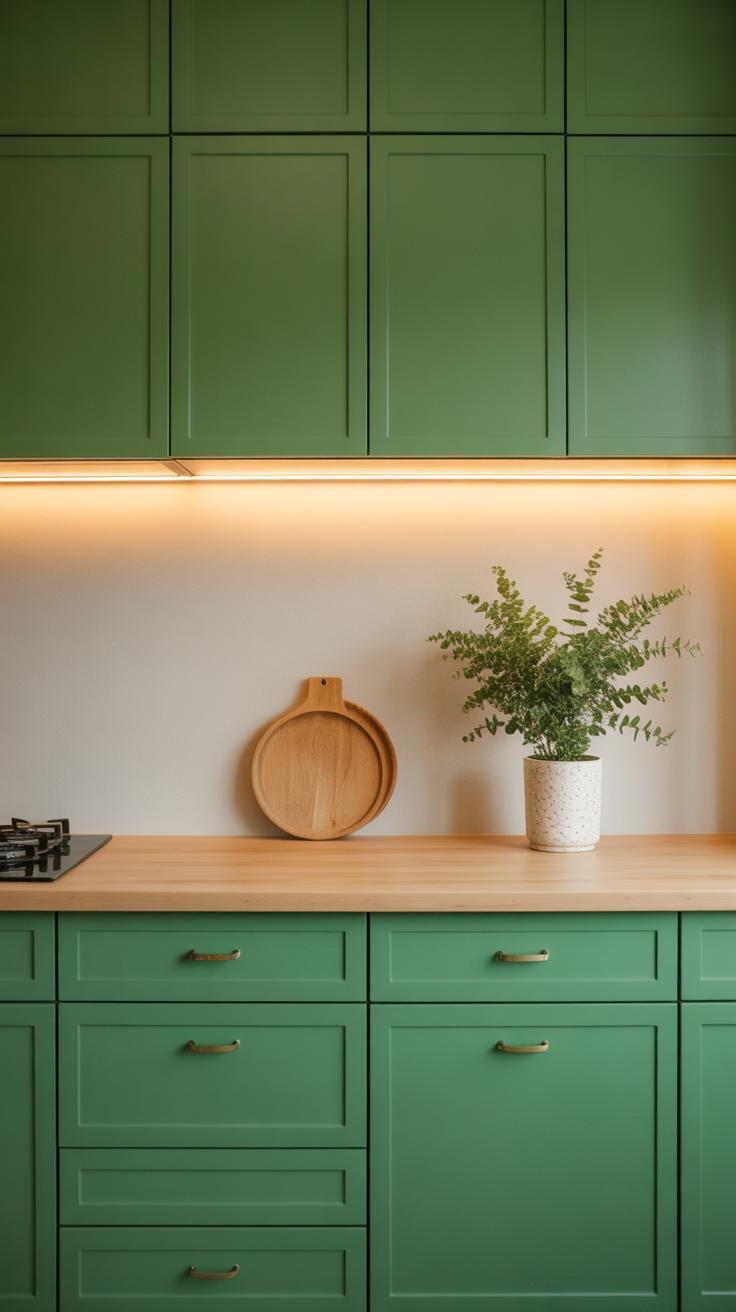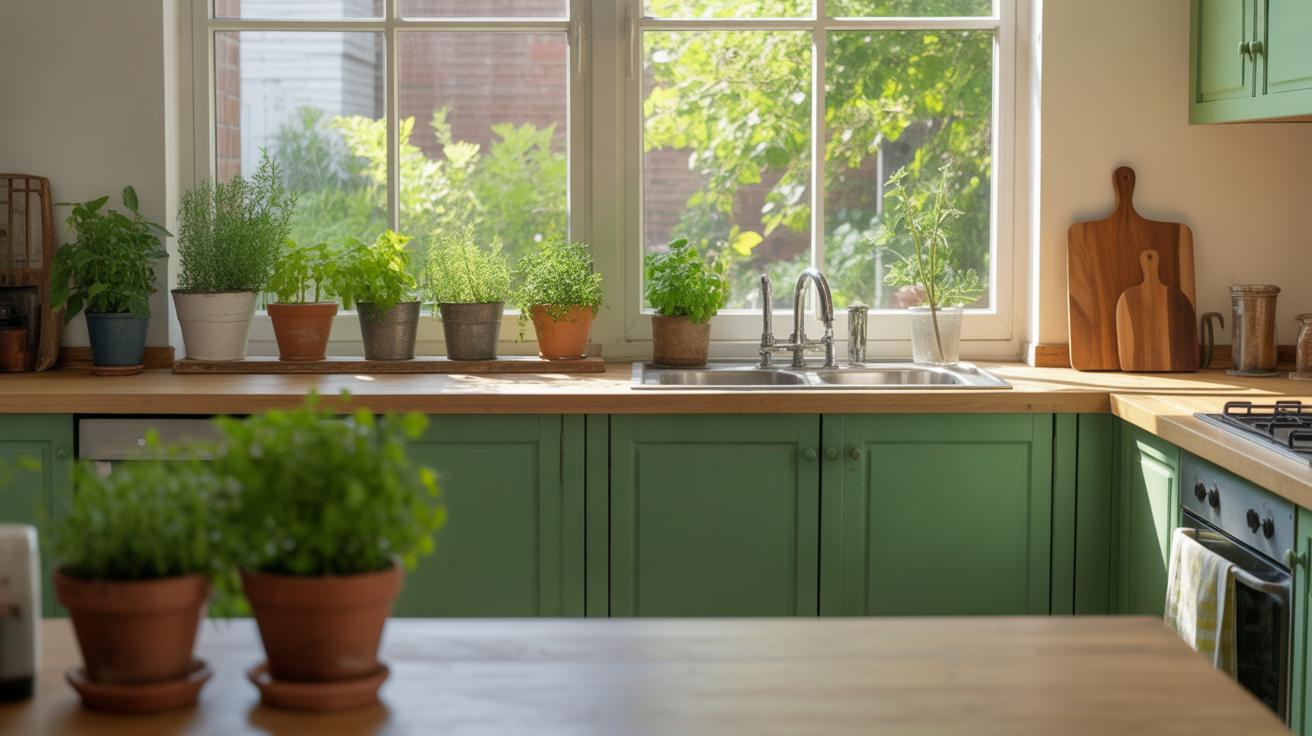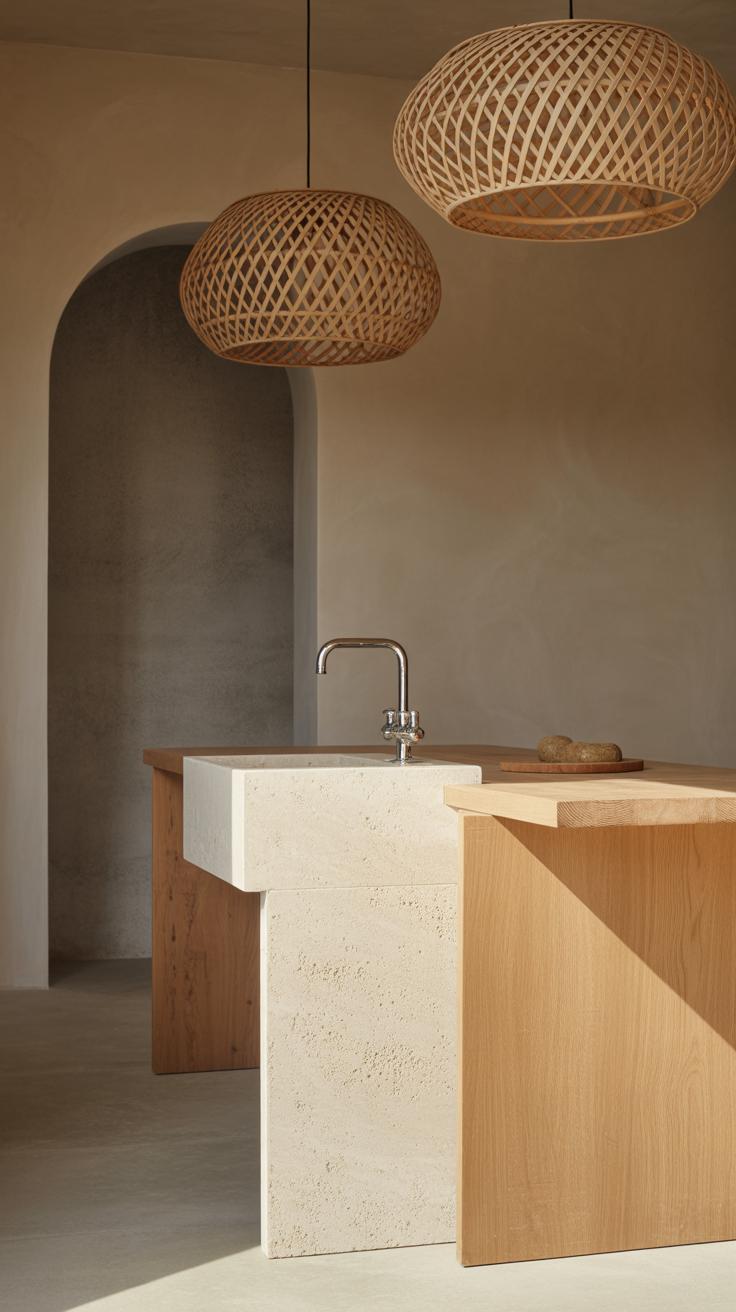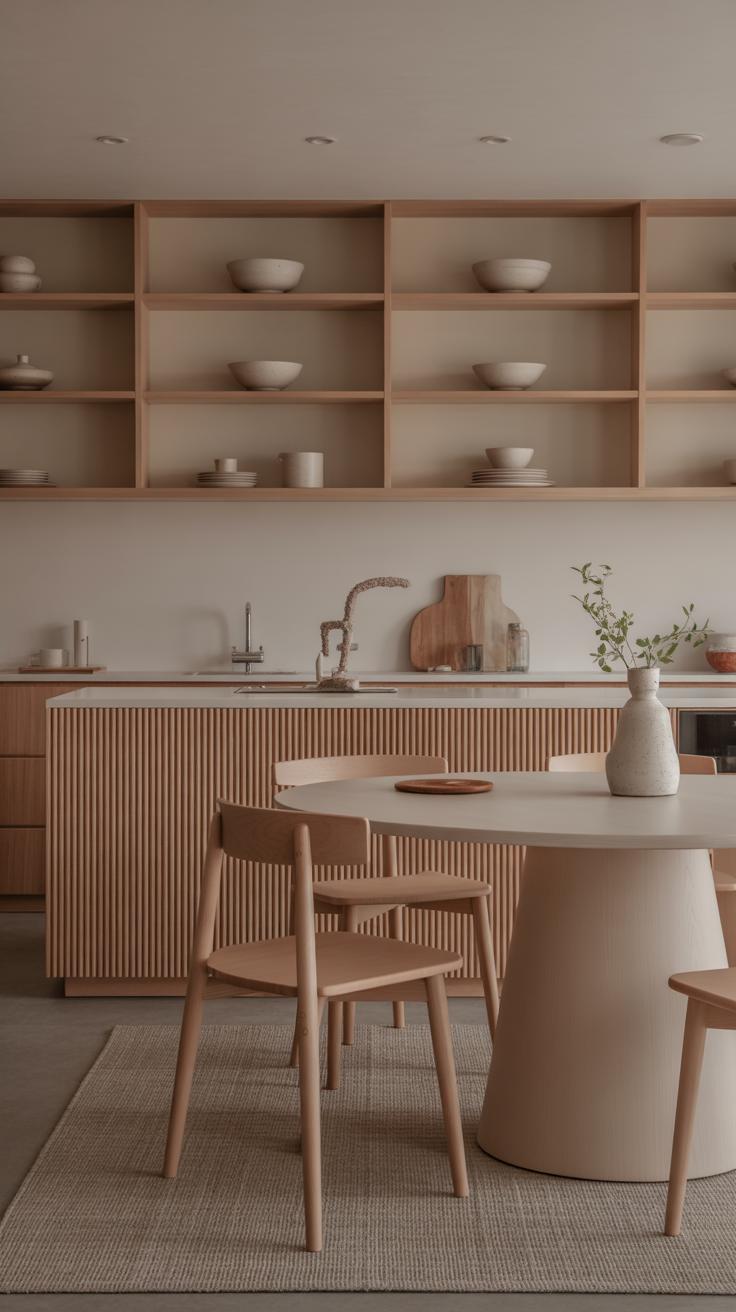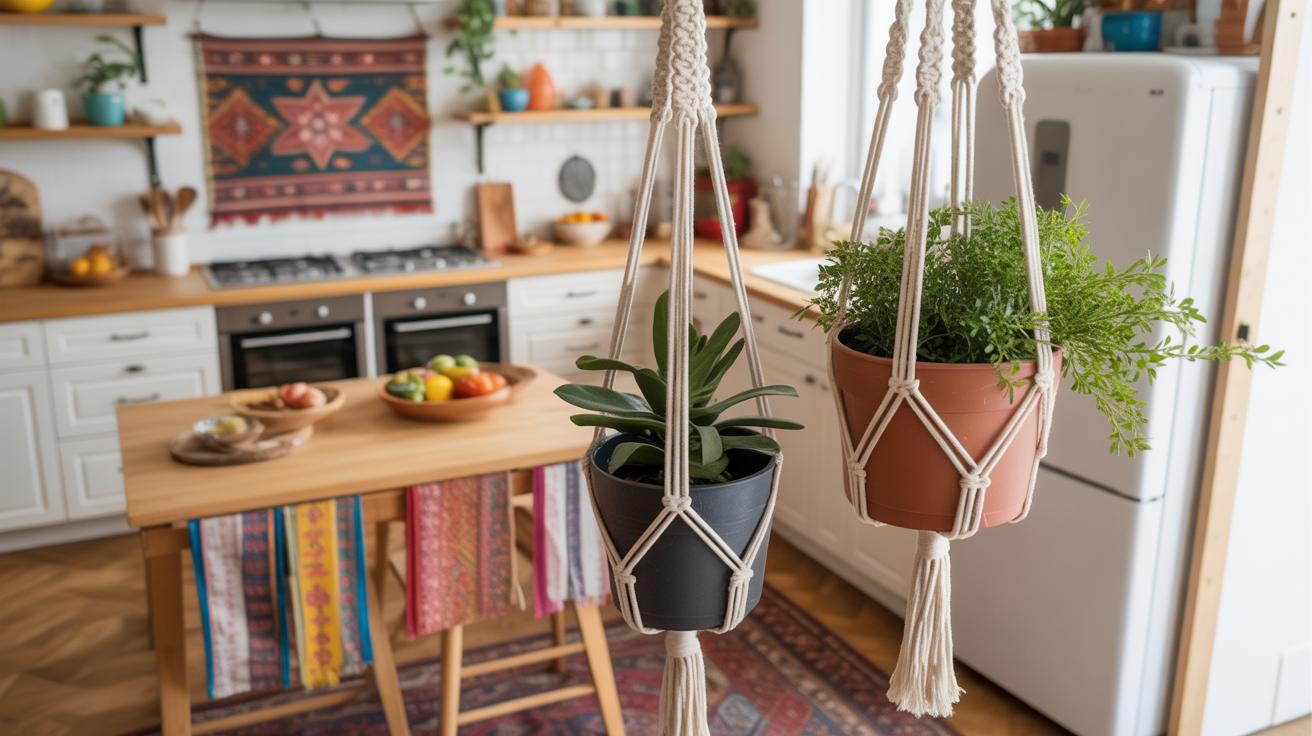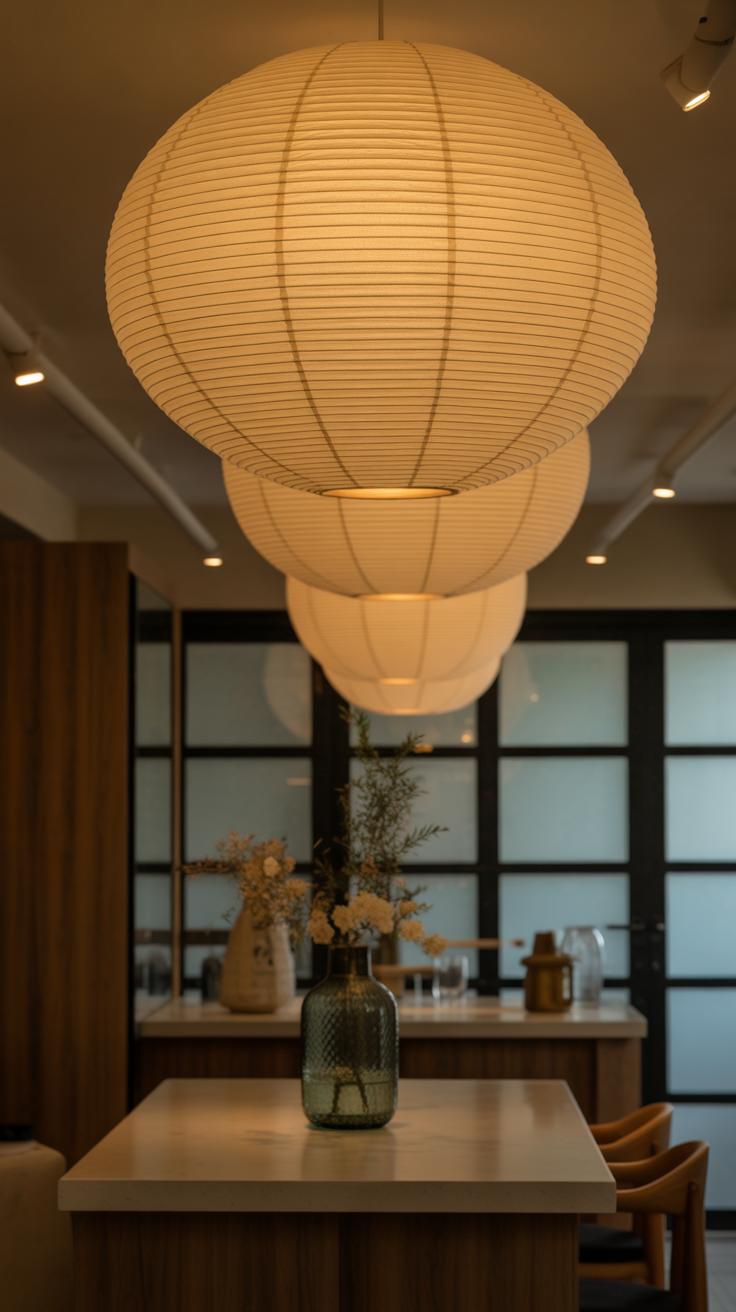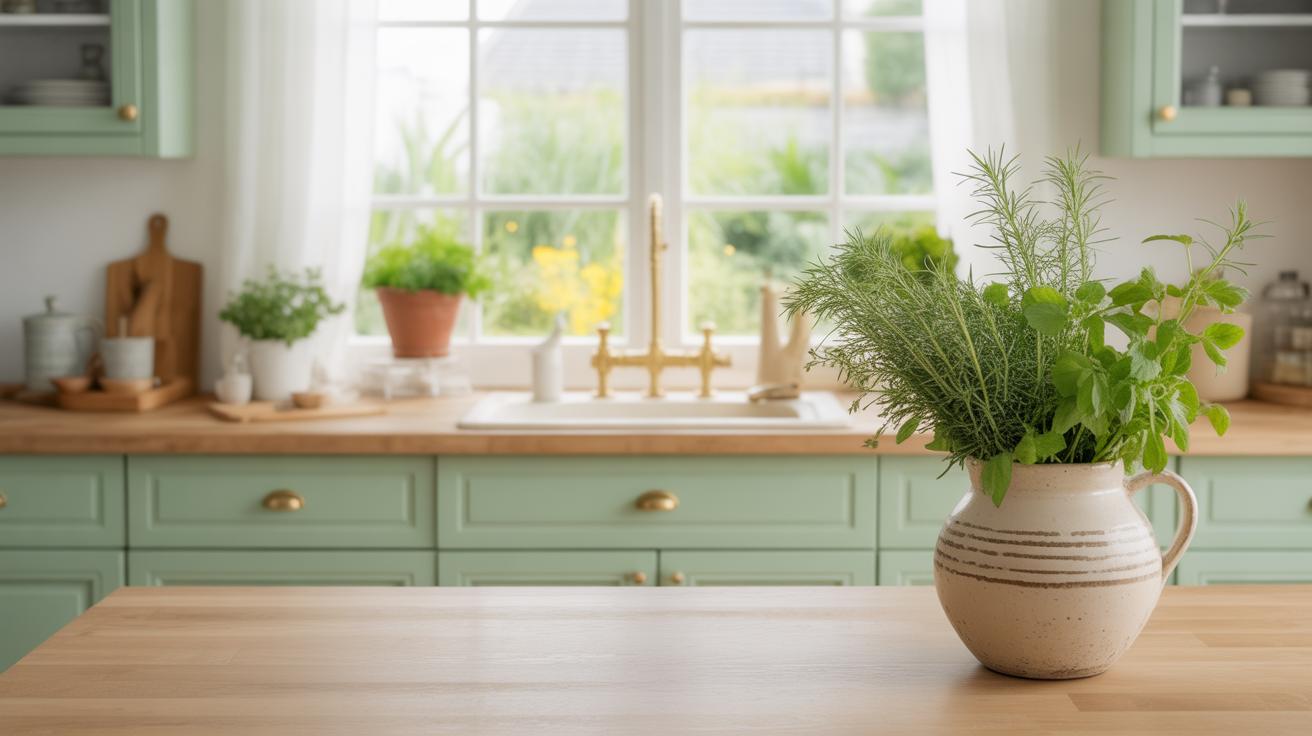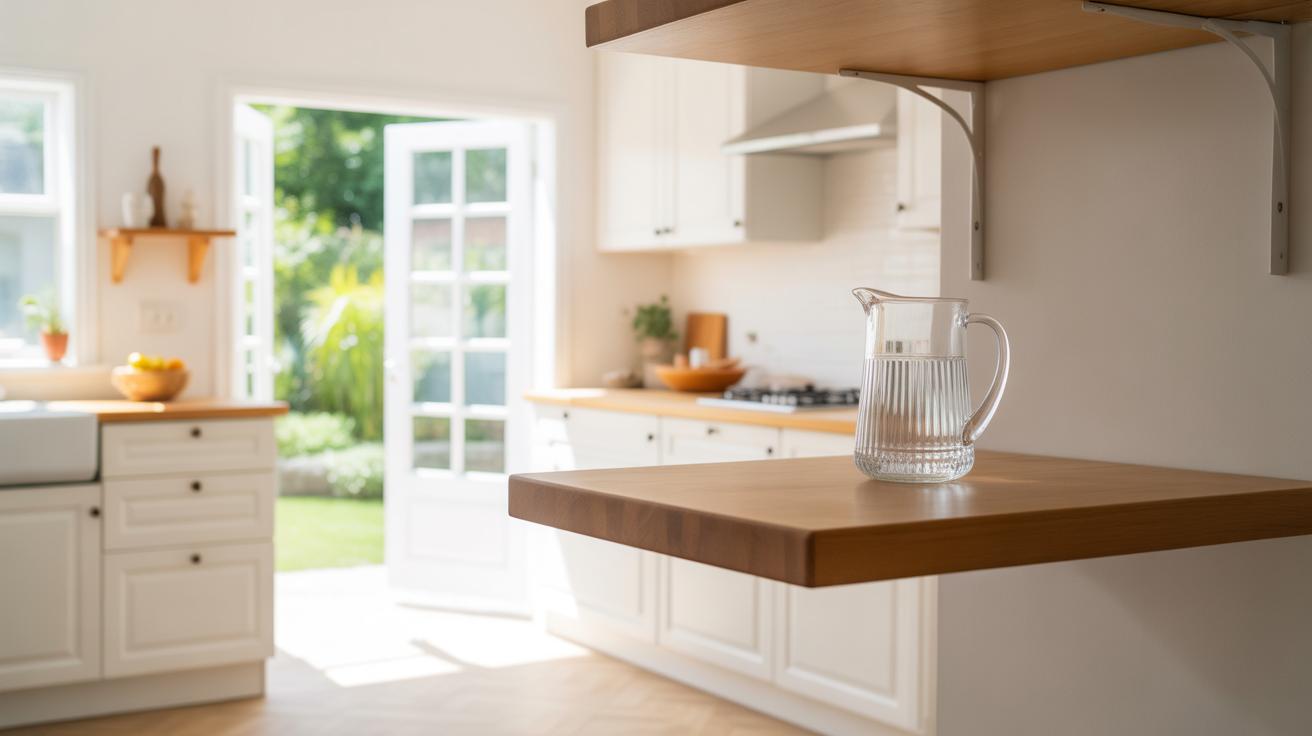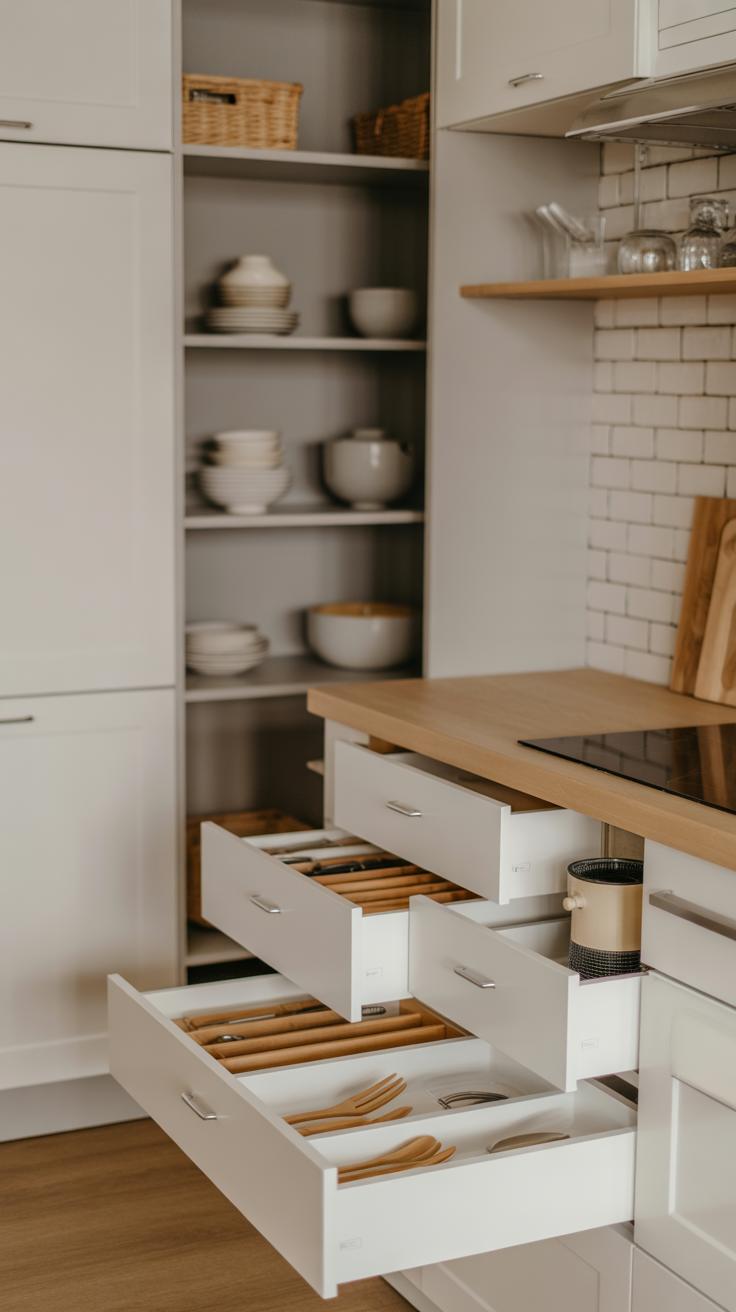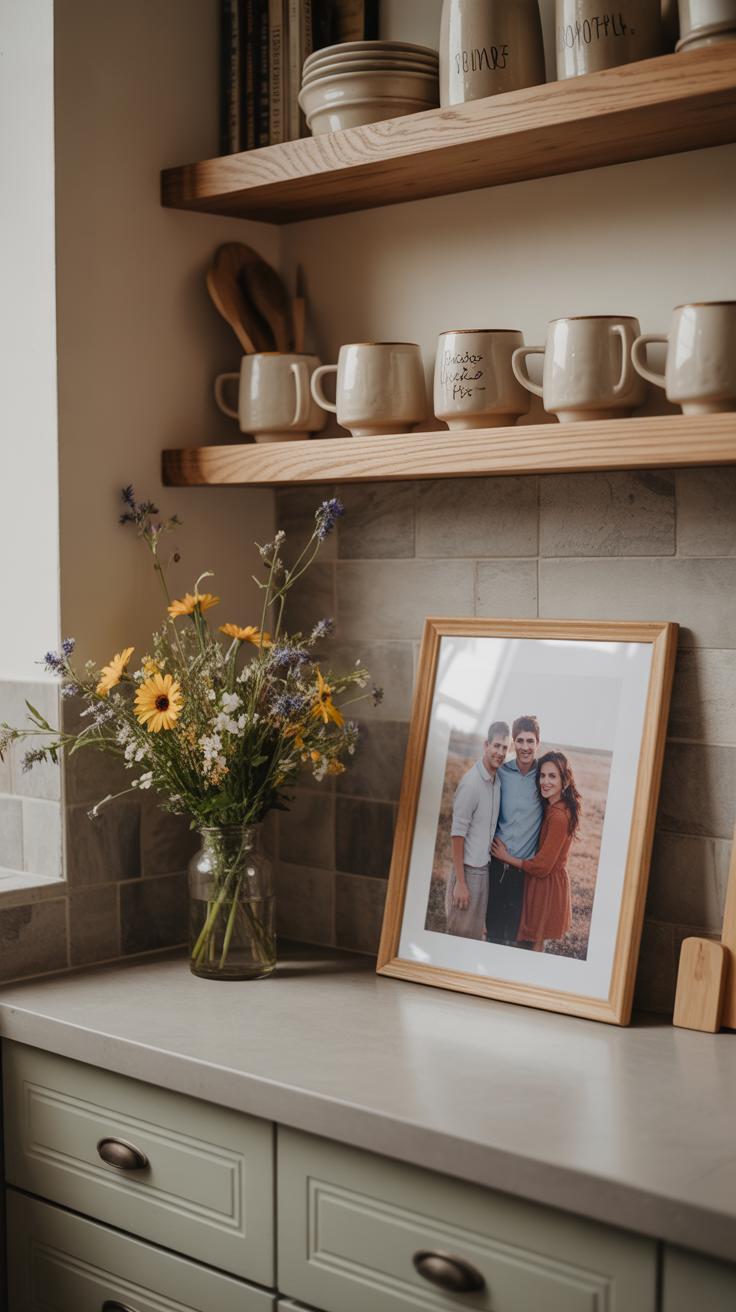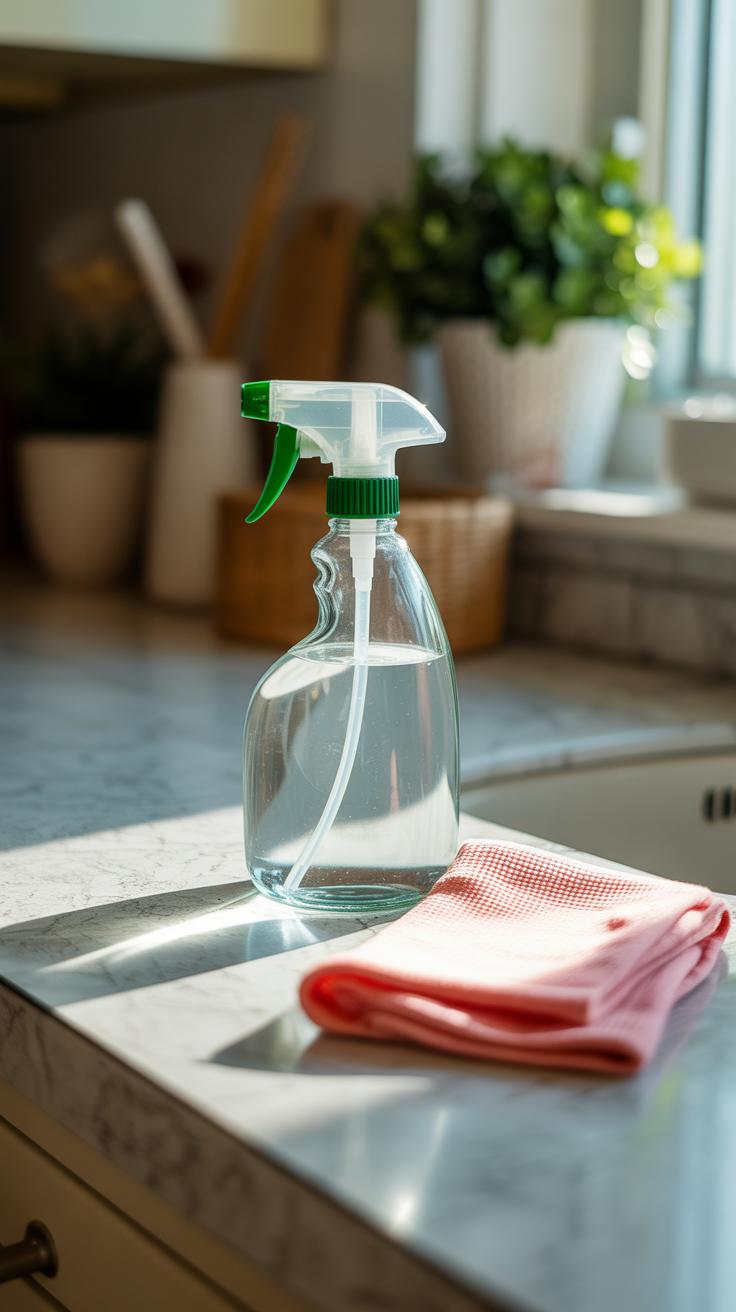Introduction
Japandi style combines the simplicity of Scandinavian design with the elegance of Japanese aesthetics. In your kitchen, this means creating a space that feels calm, practical, and clean. The Japandi style takes away clutter, focusing on natural materials and soft colors, resulting in a warm and inviting place to cook and gather.
This article explores how you can bring Japandi style into your kitchen. We will look at furniture choices, materials, colors, and decoration tips. You will learn how to balance the two cultures to create a space that feels both functional and beautiful every day.
Understanding Japandi Style
Japandi style is an interesting blend of two design philosophies that, at first glance, might seem quite different but actually complement each other well. It merges Japanese minimalism with Scandinavian simplicity, creating spaces that feel calm and practical. You might think of it as a careful balance between function and tranquility, where each element serves a purpose without crowding the room.
From the Japanese side, this style borrows a sense of restraint. There’s a focus on natural materials like wood and stone and an emphasis on letting light and space breathe. Rooms aren’t just empty for the sake of emptiness—they’re intentionally clear to foster peace.
On the flip side, the Scandinavian influence brings in clean lines and practicality. It’s less about ornamentation and more about things working well and looking straightforward. You’ll often find light colors paired with purposeful furniture that doesn’t scream for attention but quietly supports daily living.
It’s curious how these distinct approaches combine to create something that feels both warm and uncluttered. It makes you wonder—does the calm come more from the materials or the minimalism? Maybe it’s the way these elements just seem to pause the day for a moment.
Japanese Influence
Japanese design often surprises with its subtlety. Minimalism here isn’t about starkness but about carefully choosing what stays and what goes. Natural materials like bamboo, soft woods, and paper screens invite you to connect with nature.
Space is used thoughtfully. There’s no rushing to fill every corner. Instead, light—both natural and soft artificial—plays a key role in shaping the mood. It’s not unusual to see sliding doors or open shelving that guides movement and sightlines gently through the kitchen, making the space feel larger than it is.
Elements like tatami mats or simple pottery might appear, adding texture without overwhelming senses. And you might catch yourself lingering in the silence between objects more than on the objects themselves.
Scandinavian Influence
Scandinavian design adds a layer of function to the serene Japanese backdrop. Here, everything has a task. This practicality brings clean lines and smooth surfaces that are easy to maintain—a nice bonus when it comes to kitchens.
The color scheme leans toward lightness—think pale grays, creamy whites, and muted blues—that keeps spaces feeling open and bright. It’s not just about looks, though; these colors can actually shift your mood, making the kitchen feel inviting without being overbearing.
Furniture and fixtures follow simple forms. Imagine smooth cabinetry with subtle handles or open shelves that encourage quick access and neat storage. It all contributes to a kitchen where you might actually want to spend time, even when busy.
Putting these two styles together isn’t always straightforward. But when done well, the result is a calm, purposeful kitchen that pulls you in without asking for too much attention. It’s a quiet kind of beautiful.
Choosing Colors for a Japandi Kitchen
Picking the right colors can subtly shape how your kitchen feels. Japandi style leans heavily on soft, neutral shades that ease the mind and reduce visual clutter. Think off-whites, gentle beiges, and soft grays—the kind of colors that don’t shout but rather invite a quiet calm. When you see a kitchen bathed in these tones, it’s easier to breathe, focus, and just be. It’s almost like the walls are whispering rather than yelling, which feels refreshing in a space where you spend a lot of time.
Still, too much softness might risk making the room feel a bit flat or lifeless. That’s where layers of contrast come into play. A darker wood tone, maybe a walnut or deep teak, can add depth and warmth without upsetting the peaceful vibe. Some people also bring in touches of muted blues or greens. These calmer shades add color without turning the kitchen into something overly bright or busy. It’s a bit like adding shadows to a painting—they help define shapes and make everything else stand out a little more.
When you’re selecting your palette, you might wonder: how much contrast is enough? There’s no perfect answer, really. Sometimes I find a subtle pop of color lifts the whole mood; other times, even that feels like too much. Experiment a little. Paint samples on your walls. See how the light hits them at different times of day. Pay attention to how the colors influence your mood—whether they bring you calm or maybe even some unexpected energy. That’s part of what makes Japandi kitchens feel so personal and thoughtfully designed.
Selecting Materials and Textures
When you think about Japandi style, the materials and textures you choose really shape the whole vibe of the kitchen. Wood and bamboo are key players here. They bring a kind of warmth that doesn’t scream for attention but gently invites you in. The natural grains, the subtle imperfections—they add a softness, a tactile comfort that feels organic. Bamboo, in particular, is interesting because it’s light, flexible, and can ground the space without overwhelming it. You might find yourself appreciating the texture under your fingertips or the way light plays across a wooden countertop. It’s not flashy but quietly present.
Simple ceramics and natural fabrics balance this woodiness. Think smooth, handcrafted bowls or matte-finished mugs that don’t try to be showy but look unfinished in an intentional way. Linen or cotton tea towels, cushions, maybe even a runner, contribute texture without clutter. These fabrics often have a slightly rough weave or wrinkled look, which stops the kitchen from feeling too clinical or sparse. Including these materials isn’t just about looks—they add a sensory layer that invites touch and use, blending utility with calm aesthetics.
Do you ever notice how certain textures just make a space feel… lived in, yet peaceful? Japandi kitchens lean into that idea, mixing the hard and soft, the rustic and refined, in what feels like a quiet conversation between materials. It might even push you to rethink what you want in your kitchen—what feels like home, not just what looks good.
Furniture and Layout
Choosing Japandi style furniture means focusing on pieces that are straightforward but carefully crafted. Think low-profile chairs and tables with clean, simple lines—nothing ornate or oversized. The idea is to keep forms practical and grounded. For example, a wooden dining bench without backrests can feel open and unobtrusive, while still providing solid comfort. It’s about functionality first, yet the design never feels dull or purely utilitarian.
The layout matters a lot too. You want your kitchen to breathe, which means avoiding filling every corner with cabinets or bulky furniture. Open shelving or floating storage can help keep things light. When the path through the kitchen stays clear, moving around feels natural, not cramped. You might find it tricky to resist adding a few extras, but the less cluttered, the more the space feels calm—like you can actually focus on what matters in the kitchen.
Do you ever notice how a cramped kitchen, even if well-designed in theory, can make cooking a chore? That’s the opposite of what Japandi seeks. Let your furniture serve the space without dominating it, and your kitchen workflow will probably feel smoother than you expected.
Lighting in Japandi Kitchens
Natural light plays a big role in Japandi kitchens, shaping how the space feels—open yet calm. You want to arrange windows so they let in as much daylight as possible. It’s not just about having big windows; their placement matters too. If you can, position windows opposite each other or near reflective surfaces like mirrors or pale walls. These tricks bounce light around, making even smaller spaces feel brighter. Light colors on walls or cabinets help, too. I’ve noticed that a soft cream or a subtle gray can gently brighten a kitchen without shouting for attention.
Artificial lighting should complement this daylight, not compete with it. Choose fixtures that emit a soft, warm glow to keep the kitchen inviting through the evening. Think minimal designs—simple wooden or matte metal pendants, maybe a couple of discreet downlights, nothing flashy. It’s almost like the light becomes part of the room’s personality rather than an obvious feature. Flickering or harsh bright bulbs will break the calm you’re working towards, so avoid those. You want a steady light that feels comfortable, especially during meal prep or quiet mornings.
So, ask yourself: how can your kitchen stay bright yet soft throughout the day? Experiment with light layers rather than a single overhead source. Mix natural and artificial light wisely. It might take patience, but the effect is worth it—you get a kitchen that feels alive yet peaceful all at once.
Incorporating Nature into Your Kitchen
Bringing natural elements inside your kitchen feels essential in Japandi style. It’s not just about looks—there’s a deeper connection to nature that this design celebrates. Adding plants or organic materials creates a calm atmosphere. It softens the space without making it feel cluttered, which can be tricky in a kitchen.
Simple Greenery
Low-maintenance plants are ideal for kitchens where humidity and fluctuating temperatures can be challenging. Think about:
- Snake plants—they’re tough and don’t need much light.
- Pothos—grows quickly and can trail elegantly across shelves.
- Herbs like basil or rosemary—they’re fresh, practical, and bring a mild scent to the room.
- Air plants—no soil, just occasional misting, and they look modern but natural.
Having a touch of green can surprisingly lift your mood while cooking or cleaning. I remember once placing a small pothos near the sink, and it instantly made mornings feel less rushed.
Natural Decorations
Wooden bowls and stone trays double as decoration and serve a purpose. They reflect the natural materials both Japanese and Scandinavian cultures admire. Dried flowers, unlike fresh ones, last longer and add texture without needing attention.
Here are some ideas to consider:
- A bowl carved from unfinished oak, holding fruits or nuts.
- Polished river stones arranged on the countertop as paperweights or simple accents.
- Bundles of dried lavender or eucalyptus hanging discreetly.
You might find these touches less distracting than bright colors or flashy decor. They invite quiet moments and a subtle reminder that nature lives indoors with you.
Organizing and Decluttering
Keeping a Japandi kitchen clean and tidy can feel like a quiet ritual rather than a chore. The style’s appeal lies in simplicity, so your first step is to choose what really belongs in the space—and let the rest go. I’ve found that keeping only the tools and dishes you use daily makes a big difference. You don’t have to be harsh about it; sometimes, a little hesitation before tossing something out is natural. But ask yourself: when was the last time I used this? If you can’t remember, it’s probably time to part ways.
Smart Storage Solutions
Built-in cabinetry is your best friend here. Cabinets that reach the ceiling or drawers hidden beneath countertops help contain clutter without drawing attention to it. Remember, storage doesn’t need to be flashy. Think about pull-out shelves where spices or utensils tuck away neatly, or concealed compartments for appliances you rarely use. The layout can encourage this—placing frequently used items in easy-to-reach spots, less common things higher up. This kind of design reduces visual noise, letting the room breathe.
Minimalism in Practice
Minimizing isn’t just about what you keep, but how often you revisit those choices. It’s easy to accumulate kitchen gadgets “just in case,” but that rarely ends well. Try a seasonal purge—every few months, sift through your drawers and shelves, and quietly move aside items that no longer spark usefulness or joy. Also, consider adopting a mantra like “one in, one out” for new purchases. It’s not as strict as it sounds and can help maintain equilibrium without making you feel deprived.
Adding Personal Touches
Japandi style thrives on simplicity, but that doesn’t mean your kitchen should feel impersonal or cold. You can add warmth and character by choosing a few carefully selected art pieces or personal items without cluttering the space. It’s a balancing act—too much, and the calm atmosphere vanishes; too little, and the room feels sterile.
When selecting art or decor, look for pieces that have natural textures or subtle colors. Think minimalist prints, a single framed botanical sketch, or a ceramic wall plate with soft earth tones. Avoid anything too flashy or busy—Japandi is about quiet harmony, so each piece should invite a moment of pause rather than demand attention.
Meaningful objects work best when they have a story or simple beauty. Maybe a handmade pottery bowl from a local craftsperson, or a wooden spoon passed down through your family. These items bring warmth without overwhelming. Sometimes, just a small stack of linen napkins in muted hues or a tea set you love can make the kitchen feel more welcoming without straying from the style.
The key is patience—maybe you add something new after living in the space for a while, not all at once. Have you noticed how a single, well-placed object can change your whole feeling about a room? It’s subtle, but it’s there. And isn’t that what Japandi is about?
Maintaining Your Japandi Kitchen
Keeping your Japandi kitchen feeling calm and functional over time requires more than just an initial setup. A few simple habits can help you preserve that clean, peaceful vibe you worked to create.
Daily Care Habits
Try to clear countertops daily—Japandi kitchens rely on uncluttered surfaces, so wiping down after cooking or meal prep keeps the space fresh. I’ve found that putting away items immediately, instead of just moving them around, really helps avoid buildup. Running a quick sweep or mop after meals also stops dirt from settling. You might think it’s tedious, but those little actions add up.
Also, pay attention to your utensils and tools. Storing them neatly in bamboo or wooden holders matches Japandi’s natural aesthetic, but it also keeps things organized, making cleaning easier. Don’t forget about air circulation—opening windows or using exhaust fans helps reduce lingering smells and moisture that could disrupt this calm environment.
Seasonal Deep Cleaning
Every few months, it’s good to do a more thorough clean and reorganization. Take time to empty cabinets and drawers completely. This not only reveals what you rarely use but gives you a chance to dust off unnoticed areas. While rearranging, think about practicality—maybe you’ll move frequently used items closer to your prep space, improving flow.
Consider wiping down wooden surfaces with natural oils to maintain their finish and prevent drying out, which can be easy to overlook. Also, look over your textiles and cushions, washing or refreshing them to keep colors and textures from dulling. This deeper attention resets the atmosphere, making your kitchen feel new again, even if you keep the same pieces.
Conclusions
Japandi style kitchens offer a unique way to blend the best of Japanese and Scandinavian design. You can create a space that feels peaceful, neat, and connected to nature. The focus on simplicity and natural elements helps the kitchen become a welcoming heart of your home.
By choosing the right colors, materials, and furniture, you can build a Japandi kitchen that matches your needs and personality. This style encourages careful choices and mindful living, making your kitchen a place you truly enjoy spending time in.


